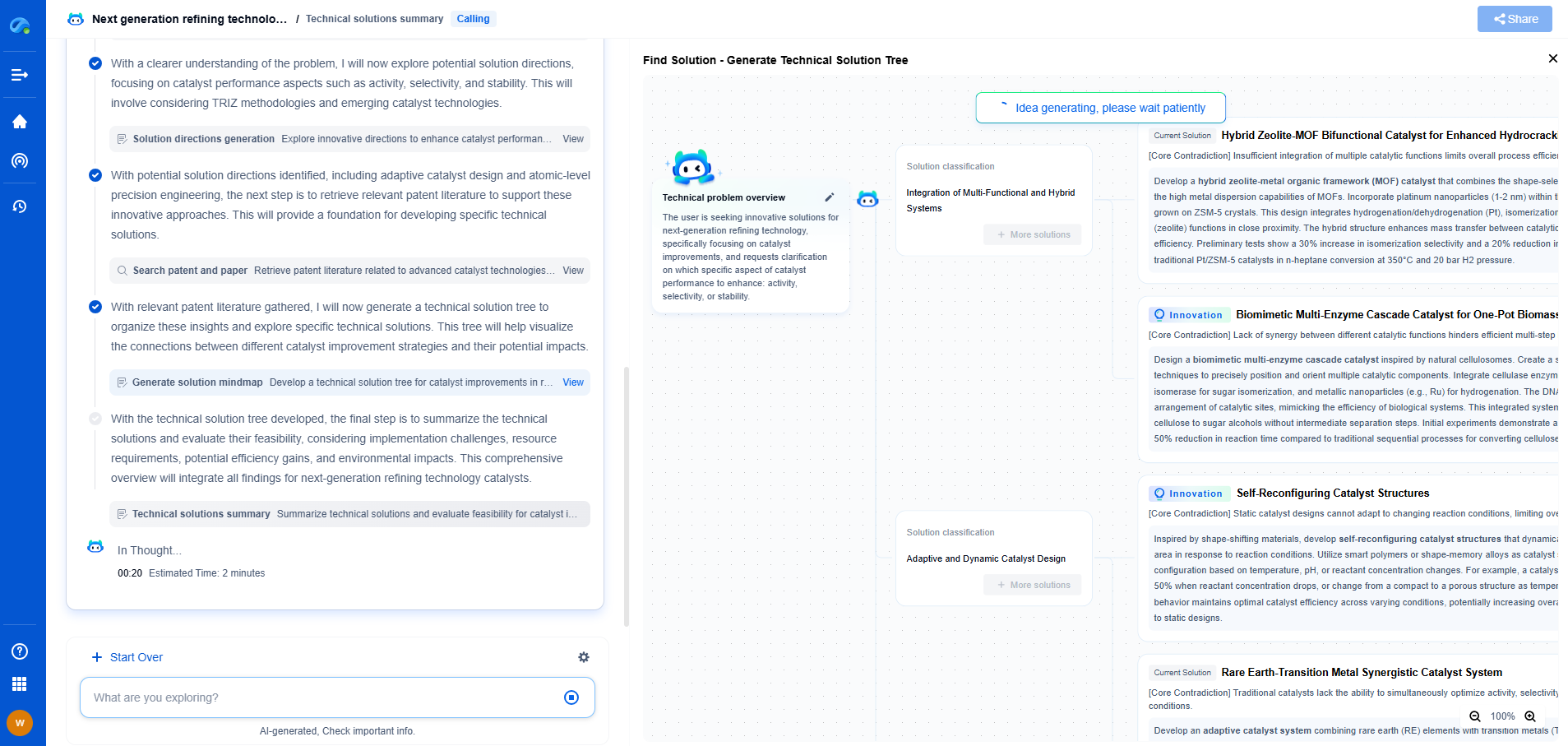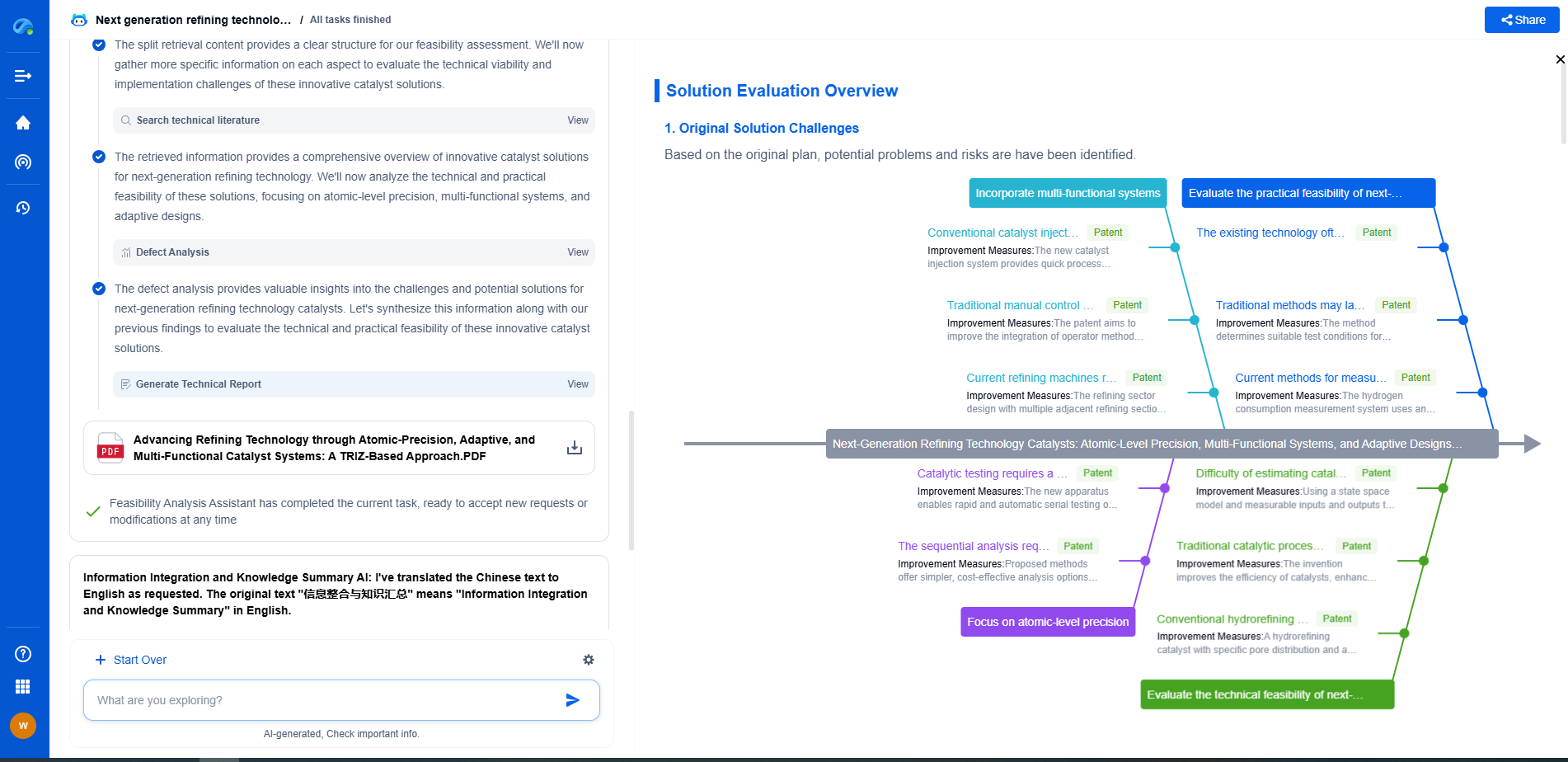Why your gears fail NVH testing—and how to fix it
JUL 2, 2025 |
When it comes to high-performance machinery, gears play a crucial role. However, they often become a source of noise, vibration, and harshness (NVH) issues, which can significantly impact the overall performance and user experience of a machine. NVH testing is a critical step in gear design and manufacturing, aiming to identify and mitigate these issues. Despite its importance, many gears fail NVH testing, leaving engineers puzzled. Understanding the root causes of these failures is essential to develop effective solutions.
Common Causes of NVH Failures in Gears
1. Material and Manufacturing Defects
One of the primary reasons gears fail NVH testing is due to material and manufacturing defects. Poor material quality, improper heat treatment, and manufacturing errors can lead to imbalances, irregular surfaces, and inconsistencies in the gear structure. These imperfections can cause vibrations and noise, reducing the gear's performance and lifespan.
2. Design Flaws
Design is the foundation of any gear system. Inadequate design can lead to excessive stress concentrations, lack of proper alignment, and inefficient load distribution. These design flaws often result in increased vibration and noise levels during operation, leading to NVH testing failures.
3. Assembly Errors
Even perfectly designed and manufactured gears can fail NVH testing if they are not assembled correctly. Misalignment, improper fit, and inadequate lubrication during assembly can introduce additional noise and vibrations, affecting the performance and reliability of the gear system.
4. Operational Conditions
The operating conditions of a gear system can also contribute to NVH issues. High-speed operations, abrupt load changes, and environmental factors such as temperature and humidity can exacerbate NVH problems. Proper consideration of operational conditions is necessary to ensure gear systems perform optimally under real-world conditions.
Strategies to Fix NVH Issues in Gears
1. Improve Material Selection and Manufacturing Processes
To address material and manufacturing defects, it is crucial to select high-quality materials that are suitable for the specific application. Implementing advanced manufacturing techniques and rigorous quality control measures can significantly reduce defects and improve the overall performance of gears.
2. Optimize Gear Design
Design optimization plays a pivotal role in reducing NVH issues. Finite Element Analysis (FEA) and computer-aided design (CAD) tools can help identify and rectify design flaws before production. Considerations such as gear tooth profile, helix angle, and pressure angle should be carefully analyzed and optimized to minimize noise and vibrations.
3. Enhance Assembly Practices
Proper assembly practices are vital for ensuring gears meet NVH testing standards. Implementing precise alignment techniques, ensuring tight tolerances, and using appropriate lubrication can help reduce the likelihood of assembly-related NVH failures. Regular training and strict adherence to assembly protocols can improve consistency and reliability.
4. Adapt to Operational Conditions
Understanding the operational environment is critical in mitigating NVH issues. Engineers should consider factors such as load variations, temperature fluctuations, and environmental conditions during the design and testing phases. Implementing dynamic testing and simulation can provide valuable insights into how gears will perform under different scenarios, allowing for proactive measures to address potential NVH problems.
Conclusion
Gears are fundamental components in many machines, and their performance directly affects the overall efficiency and user satisfaction. NVH testing is a vital process to ensure gears operate smoothly and quietly. By addressing common causes of NVH failures—such as material defects, design flaws, assembly errors, and operational conditions—and implementing targeted strategies, engineers can significantly enhance the performance and reliability of gear systems. The continuous improvement of materials, design, and manufacturing processes, alongside thorough testing and evaluation, will lead to gear systems that not only pass NVH tests but also excel in real-world applications.
Boost Innovation in Gears & Transmissions with Patsnap Eureka
Whether you're designing a next-gen planetary gearbox or optimizing gear tooth profiles for noise reduction, keeping up with the fast-evolving landscape of mechanical transmissions requires more than just experience—it takes insight, speed, and smart tools.
Patsnap Eureka, our intelligent AI assistant built for R&D professionals in high-tech sectors, empowers you with real-time expert-level analysis, technology roadmap exploration, and strategic mapping of core patents—all within a seamless, user-friendly interface.
Whether you're streamlining a manual transmission system or exploring electromechanical actuation, Patsnap Eureka helps your team move from concept to novelty faster than ever.
👉 Experience Eureka in action—request a personalized demo today and see how AI can revolutionize your gear innovation workflows.
- R&D
- Intellectual Property
- Life Sciences
- Materials
- Tech Scout
- Unparalleled Data Quality
- Higher Quality Content
- 60% Fewer Hallucinations
Browse by: Latest US Patents, China's latest patents, Technical Efficacy Thesaurus, Application Domain, Technology Topic, Popular Technical Reports.
© 2025 PatSnap. All rights reserved.Legal|Privacy policy|Modern Slavery Act Transparency Statement|Sitemap|About US| Contact US: help@patsnap.com

